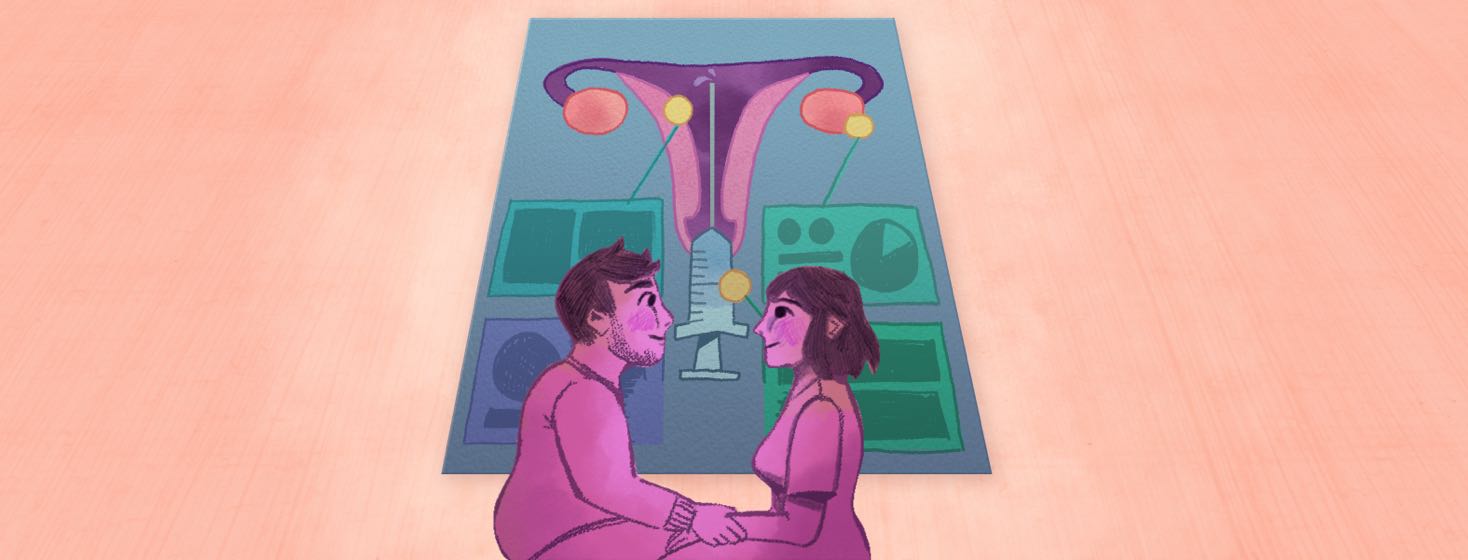Trying to Conceive with CF: My IUI Experience
After our fertility testing was complete, we met with a Reproductive Endocrinologist to discuss the treatment plan and various success rates. I was a bit nervous as there are so many interventions and assisted reproductive techniques used to help couples along on their journey to conceive. I was a bit out of my element in comparison to CF treatment. Usually, with CF, I know what’s about to happen--it's all very predictable after so many years.
Following the appointment, we decided on doing an IUI cycle as a couple to increase our chance of conceiving with CF. Here’s a bit about our experience:
What is IUI?
Intrauterine insemination (IUI) is a fertility treatment that involves taking a concentrated sample of sperm and putting it directly into the uterus to increase the chances of conception.1 IUI is often the first step in assisted reproduction as it is less invasive and expensive than in vitro fertilization (IVF) for couples experiencing difficulty conceiving.1 The IUI process involves using ovulation induction medication, blood and ultrasound monitoring, a shot to trigger ovulation, and finally, insemination.
Why is IUI helpful in CF?
Many women with CF experience thicker than normal cervical fluid due to the similar effect CF has on mucus in the rest of the body.2 Healthy cervical fluid plays a crucial role in transporting the sperm to where it needs to go to meet the egg.1,3 Thin cervical mucus allows the sperm to move freely. Therefore, IUI can be beneficial to women with CF because it bypasses the cervical fluid and cervix while putting the sperm directly into the uterus. In addition, the risks of IUI are low to women with CF since the procedure is done in-office without anesthesia.
The IUI process
Ovulation induction medication
The first step in an IUI cycle is using ovulation induction medication at the beginning of the menstrual cycle to grow a woman’s follicles, or eggs. For our cycle, I took a medication called Letrozole once a day for five days. Letrozole is actually used as a treatment in breast cancer as it lowers the estrogen levels in your body and therefore increases the hormones in ovulation.
There were some side effects while taking the medication such as headaches and cramping that were tolerable. In addition, I was more emotional as well--crying over a forgotten bag of onions isn’t my normal emotional state. Compared to a lot of the CF medications I take, taking Letrozole was easy-peasy.
Ultrasound monitoring
About halfway through the cycle, I went into the fertility clinic to get an ultrasound and blood work to monitor the growth of the follicles. I had three follicles that were responding to the medication and almost a mature size. That was great news and we were really happy! Because having multiples is a risk with the medication, monitoring is an important step. They want to make sure there aren’t too many eggs growing that would result in a high-risk pregnancy and birth.
Trigger shot
Once the eggs are mature and ready to be released, I was prescribed a shot called a “trigger shot.” The shot is made up of Human Chorionic Gonadotropin or HCG (the pregnancy hormone) and it forces your body to ovulate at a very specific time to line up with the IUI. Much like an insulin injection, the trigger shot is a subcutaneous injection, or within the fatty tissue, in your stomach.
I administered the shot at home and--thanks to CF--it was no big deal. My husband and I were saying for many couples administering a shot to yourself (or your partner) with no prior experience is probably terrifying. However, I am no stranger to putting needles into my own body with CFRD and accessing my own port. So, it felt like a normal Friday night for us!
Intrauterine insemination procedure
About 36 hours later, the IUI was done in the office at our fertility center. After my husband deposited his “specimen,” we waited an hour while the semen was washed. The procedure is fairly simple and similar to a pap smear, using a speculum and a long catheter passed through the cervix into the uterus. I felt only pressure and cramping as the sample was injected in. After lying flat for 10 minutes, we were free to go about our day. In 14 days, I was instructed to take a pregnancy test to see if the procedure helped us conceive. Crossing our fingers for a positive result!
Have you had difficulty conceiving with or without CF? Share your experience below!

Join the conversation